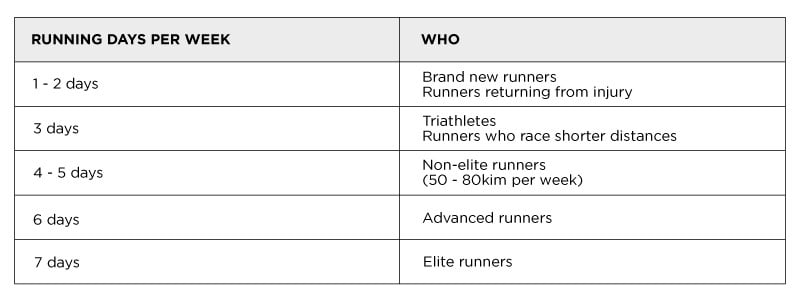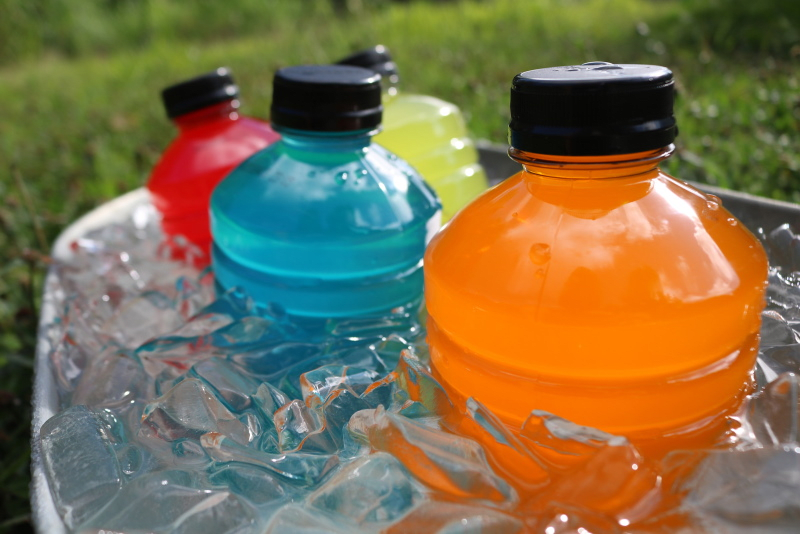

Effective recovery is a crucial part of any training plan. It’s easy to get hooked on running further and harder every day - but in reality you’ll do more harm than good.
It all relates back to physiology - breaking the body down in order to build it back up again. Whether you’re working up to your first 5K, or ultra marathon - the approach is the same. You perform a difficult workout to stress the body - including the cardiovascular and musculoskeletal system. Whether this stress is induced by a tough strength training session, or speed intervals - you’ll be breaking down the body and repair is required.
Now you may be wondering - what happens if you neglect the repair portion of your training? Essentially, without adequate repair, your muscles won’t be able to perform optimally, and you may even risk developing injuries down the line. So, if you’re really serious about improving your cardiovascular fitness and muscular power, you’ll definitely want to make sure your body is getting all the TLC it deserves.
This is achieved in two ways:
- Rest between training days
- Recovery strategy directly after a workout
1. Rest between training days
When you run, you create microscopic tears in your muscle fibres. With adequate recovery, your body will respond by rebuilding your muscles stronger in preparation for the next training session.
Kevin Vincent, M.D., Ph.D., director of the University of Florida Running Medicine Clinic says, depending on the length and intensity of your workout, the body needs a minimum of 36 to 48 hours to reboot. Without it, the body has no opportunity to rebuild and strengthen muscles; they just continue to break down. That negates all the hard work you put in.
It’s all about listening to your body. If you’re training for your first 10K - feeling stiff the next day after a run, it would be a bad idea to push past the pain. Your body needs to get used to running for longer distances, and in order to do that it needs adequate recovery. On the other hand, if you’re a seasoned marathoner, an easy run the day after a tough workout might be enough to kick-start recovery.
If you’re in need of a little more guidance, below is an indication of the number of training days you should be aiming for.

The key is to constantly keep track of your progress and assess your fitness. Maintain the frequency you are at if you’re feeling good, but scale back if you’re showing signs of fatigue or slower performance.
2. Recovery directly after a workout
“As much as athletes focus on their volume of training and the speed at which they do workouts, what they do outside of running is equally important to becoming stronger and more resilient in the future,” says Adam Tenforde, M.D., assistant professor of physical medicine and rehab at Harvard University and former All-American distance runner at Stanford.
Hydration
It’s a good idea to restore hydration as soon as possible after a tough workout to ensure you recover quickly both mentally and physically. In order to determine how much fluid needs to be replenished, you’ll need to weigh yourself before and after a run. For every 1 kg of weight lost, you’ve lost 987ml of sweat, and will need to replenish 1.3-1.6 litres of fluid over the next two hours.
Next, a good thing to consider are the differences between a hypotonic, isotonic and hypertonic fluid:
Hypertonic = more dilute than your body fluids and can be absorbed faster than water. For example, one part fruit juice to three parts water.
Isotonic = the same concentration as your body fluids and is absorbed as fast as water. For example, Lucozade Sport, or fruit juice diluted half and half with water.
Hypertonic = more concentrated than body fluids and are absorbed slower than water. These are best consumed as post-run drinks. For example, coke or neat fruit juice

Fuel
During intense workouts, your muscles get broken down and require sufficient fuel in order to recover and rebuild efficiently. Remember, muscle hypertrophy (repair or growth) is achieved when the rate of protein synthesis is greater than the rate of muscle protein breakdown. In other words, rest and adequate calorie consumption will encourage and facilitate muscular growth and repair.
This incorporates a nutritious diet (see article on best food choices for runners) as well as proper fuelling directly after a workout. The American Council on Exercise recommends aiming for a ratio of 3:1 complex carbohydrates to protein within a half hour of exercise when your muscles are most receptive to rebuilding its glycogen stores.
Good food choices post-run, could be an apple with a tablespoon of peanut butter and whole grain crackers; fat free plain yogurt with whole grain cereal and fresh berries; or protein bars that offer the optimal carb-to-protein ratio.
Stretch
This can be a controversial topic at times, and believe it or not, research has found that stretching before a run does not prevent injury or improve performance. “Static stretching before exercise causes damage to the tissue,” says physical therapist Jason Gromelski, owner of Nola Physical Therapy in New York City. “You’re inhibiting nerve contraction, so it’s not going to fire as quickly to tell the muscle to contract and perform. That leads to less force production, so your speed will go down.”
Instead, static stretching should occur after a tough run, within 25-30 minutes, when muscles are nicely warmed up. These stretches should focus on major muscle groups such as the quads, hamstrings, glutes, calves and hips and last for 10-15 minutes. Another option would be to foam roll after a workout, which can be extremely beneficial, as the action reaches deeper into muscle tissues for more effective recovery. Start by rolling the entire length of the muscle (8-10 times), then return to any tender areas and maintain pressure. Remember to avoid rolling directly over bones or joints. Breathe deeply and relax as pain and tenderness disperses, then move on to the next area.

Ice Baths
If you’ve ever experienced an ice bath - you know that it’s not at all pleasant, but it is well known to help speed up muscle recovery. The idea is to submerge the lower half of your body in ice water after a workout. This will reduce the amount of inflammation in your legs and speed up recovery by preparing your muscles for the next workout. Most athletes sit for 10 to 15 minutes at a temperature of 10-15 degrees Celsius.
One 2012 study compared the muscle soreness after workouts in individuals who engage in cold water immersion after a workout versus those who did nothing. The study concluded that there was reduced soreness in the groups that took ice baths as compared to those who didn’t.
Sleep
Muscle repair and growth doesn’t occur during your workout - it happens when your body rests. How much sleep each individual needs is entirely personal (and dependant on your genetic make-up), but the average adult needs about seven to nine hours each night, according to Matthew Edlund, M.D., and author of The Power of Rest.
Many competitive athletes understand the importance of good shut-eye on performance. Ryan Hall, who was the first American to break the 1 half hour marathon mark, pens naps in his calendar as “business meetings,” and both long distance runners, Deena Kastor and Shalane Flanagan, log as much as 10 hours of sleep per night. They realise that it’s during sleep that your body recovers from hard training and builds you into a better runner.
Final Thoughts
While rest and recovery makes up an essential part of any training schedule, they can often be overlooked. It’s important to remember that while intense training does the hard work to get you into prime shape, adequate rest will determine how effective your training will be. By implementing the above strategies, and by being mindful of how your body responds to training load and frequency, you will be able to maximise fitness improvements as well as prevent injuries along the way.

